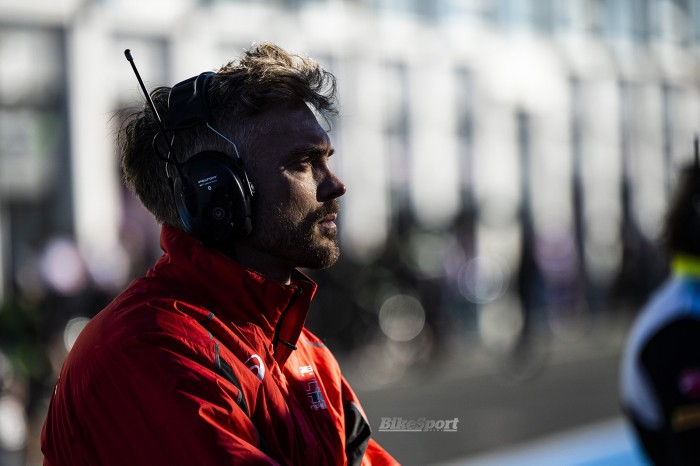Honda’s WorldSBK team has appeared to be limited by its technical ability to perform quite as well as its main rivals ever since it arrived back with a new bike in WorldSBK.
That relative struggle in real race results - for a full direct from Japan Honda team that runs an engine that some rivals say is even faster than a Ducati - may be about to undergo a step change in its results. Quite a big step change.
Honda and BMW are early beneficiaries of the new Superconcession rules for 2023, which allow each manufacturer to declare one point of their production derived machine that would like to alter - but only when their results are ‘bad’ enough.
Honda wants to make chassis changes which go beyond the small - literal - degree of adjustment that is allowed in the rules for certain key elements of the chassis.
At San Juan, we spoke to HRC Team Manager Leon Camier about what has been done already, and what is expected for 2023, when the new regulation officially begins.
“We just have more adjustment for the header pipe and the pivot position, basically,” he said of the chassis that was in Argentina. “What we have right now is limited but, basically, what we will have, hopefully, for Mandalika will be an adjusted version, like a machined version, that will more space.” Literally more space for further location and therefore geometry adjustment of the header pipe position and rear pivot point position, that is.
Previously, these things could have been adjusted within the existing rules but not by much. From Portimao onwards Honda could go beyond the few millimetres of fore and aft or up and down adjustment allowed in the previous rules, and then it will be allowed to bring a modified chassis with bigger slots cut in it for even greater adjustment in header pipe position and swingarm pivot points.
Under the new rules (parts of which for Honda and BMW have been brought in a bit early to check to see if they work as intended, before the full roll out in 2023) you will need to declare what your highest priority superconcession is. Not only that, but each manufacturer also has to have gained prior agreement with all the MSMA members that your particular changes could be made.
The first part of that process was done just in time for Portimao, and there will be more coming when Honda gets its even more modified chassis.
“We just want more adjustment of the pivot and of the headpipe. We are not adjusting ride height or balance, we want to be able to put the header pipe, basically, further forward and we want to be able to put the pivot lower down.”
This should allow the bike to turn better, based on Honda’s experience. Tyres also play a massive part in overall machine development and chassis set-up. With Honda creating the current generation of Fireblade with one eye on the super-prestigious Suzuka Eight-Hours race, you can only imagine that they did a lot of the groundwork on the Fireblade on Bridgestones, even if many other top series like WorldSBK and BSB use Pirellis.
New homologations can fix some of your existing issues, but each of them costs a manufacturer a huge amount of money, in development terms but also in manufacturing terms. They have to change their literal real world sales products on the production line, and therefore the showroom. In 2022 that means a big investment in what is a shrinking flagship hyper-sportsbike market.
“To put pressure on the manufacturers to change it is not ideal,” said Camier. “The idea of these rules, what is good that has happened, is to have more scope for adjustment. So if your problem is not camshaft, or you need to do a different gearbox ratio, or whatever, but you need something on the chassis side, we now have more options.”
People may be understandably concerned that when a significant change is made under the superconcessions rules, however tightly controlled they are, that there will be a sudden jump in performance to turn a ‘nearly there’ bike into a suddenly dominant one. But there is also a section fo the new rules that will control that.
“There is a overshooting process put in that if all of a sudden you bring this new super-concession chassis and you are too quick you will be brought straight back down very quickly again.”
That will be done by RPM, it appears. The future is now for a championship which already has three championship capable machines, in a drive to make it five very soon. And, importantly, to make it a fair playing field immediately for any new manufacturer that wants to join.


